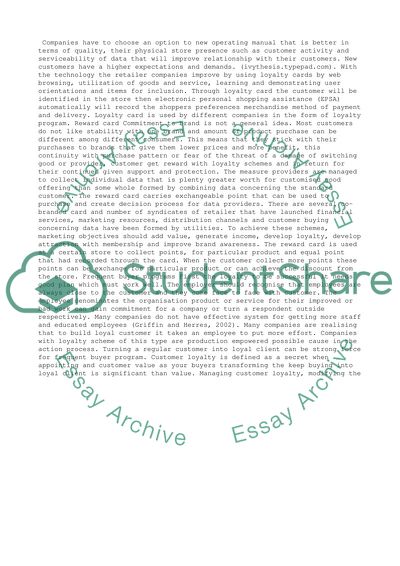Cite this document
(“Loyalty Card and Customer Loyalty: Case Study of Tesco in UK Essay”, n.d.)
Loyalty Card and Customer Loyalty: Case Study of Tesco in UK Essay. Retrieved from https://studentshare.org/management/1431623-loyalty-card-and-customer-loyalty-case-study-of
Loyalty Card and Customer Loyalty: Case Study of Tesco in UK Essay. Retrieved from https://studentshare.org/management/1431623-loyalty-card-and-customer-loyalty-case-study-of
(Loyalty Card and Customer Loyalty: Case Study of Tesco in UK Essay)
Loyalty Card and Customer Loyalty: Case Study of Tesco in UK Essay. https://studentshare.org/management/1431623-loyalty-card-and-customer-loyalty-case-study-of.
Loyalty Card and Customer Loyalty: Case Study of Tesco in UK Essay. https://studentshare.org/management/1431623-loyalty-card-and-customer-loyalty-case-study-of.
“Loyalty Card and Customer Loyalty: Case Study of Tesco in UK Essay”, n.d. https://studentshare.org/management/1431623-loyalty-card-and-customer-loyalty-case-study-of.


